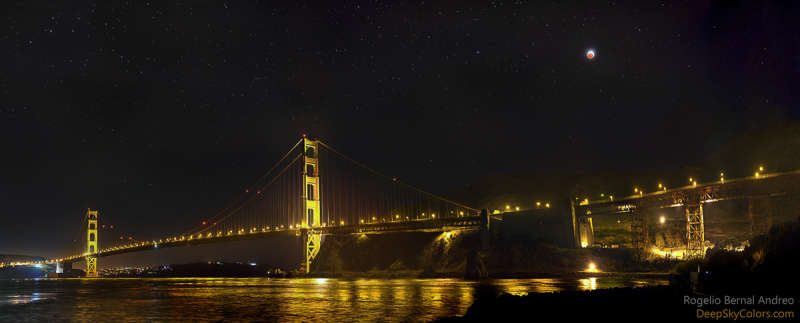
|
Credit & Copyright: Rogelio Bernal
Andreo (Deep Sky Colors)
Explanation:
Shadows play on the water and in the sky
in this panoramic view of the April 4 total lunar eclipse
over San Francisco's Golden Gate Bridge.
Just within planet Earth's shadow
the Full Moon's disk is still easy to spot at its brief total phase.
The urban night skyscape was composed
to cover the wide range of brightness visible to the eye.
The shortest total lunar eclipse of the century, this eclipse
was also the third in a string of four consecutive
total lunar eclipses,
a series known as a tetrad.
Coming in nearly six month intervals, the previous two were last
April 15 and
October 8.
The next and final eclipse in the tetrad will be on September 28.
This 2014-2015 tetrad is one of 8
total
lunar eclipse tetrads in the 21st century.
|
January February March April May June July August September October November December |
| ||||||||||||||||||||||||||||||||||||||||||||||||
NASA Web Site Statements, Warnings, and Disclaimers
NASA Official: Jay Norris. Specific rights apply.
A service of: LHEA at NASA / GSFC
& Michigan Tech. U.
Based on Astronomy Picture
Of the Day
Publications with keywords: lunar eclipse
Publications with words: lunar eclipse
See also:
